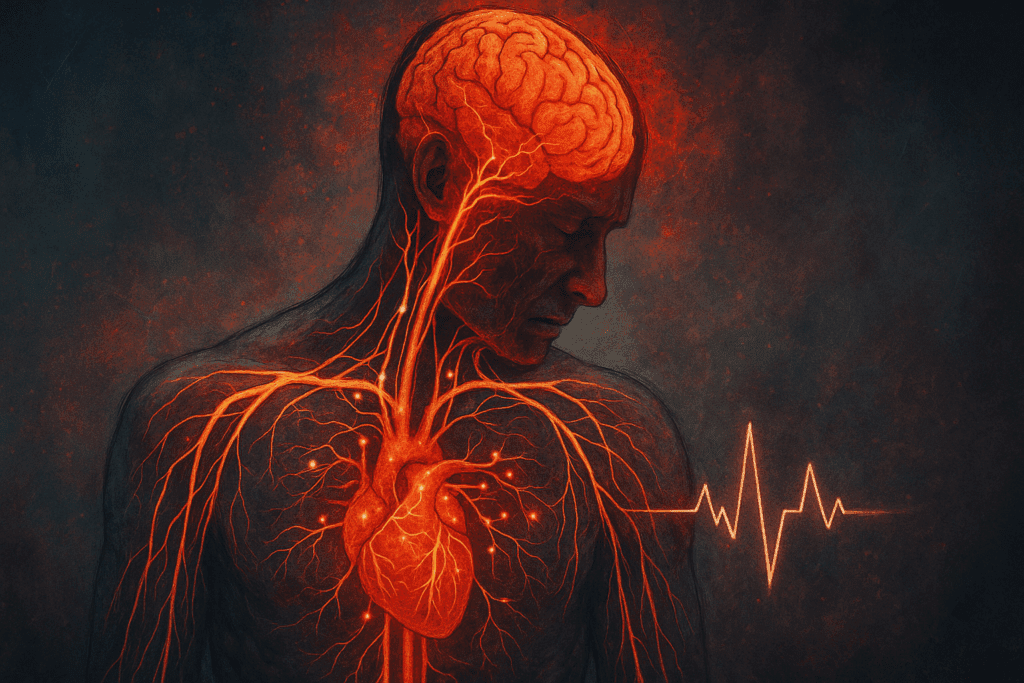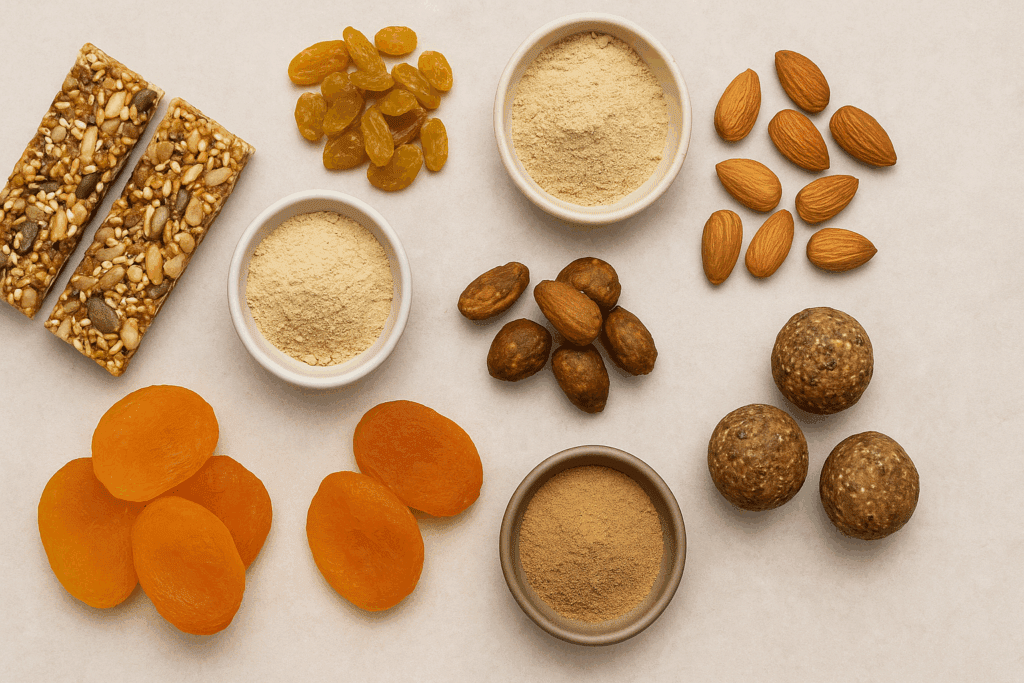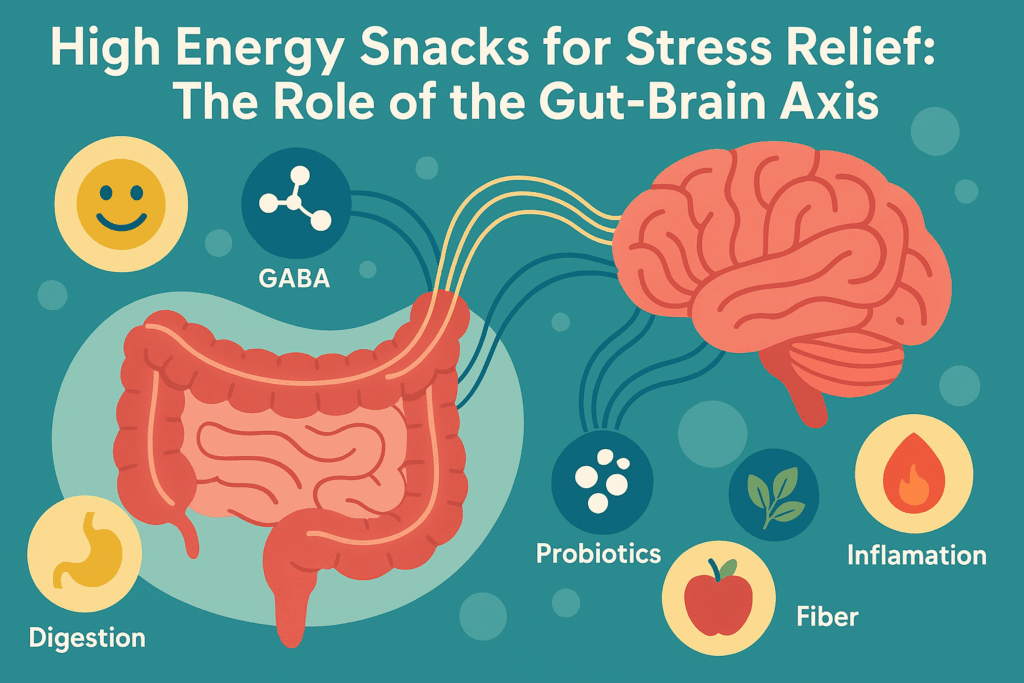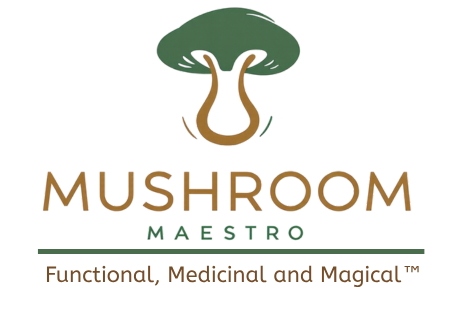In a fast-paced world characterized by mounting stress levels, increased mental fatigue, and a seemingly relentless demand for productivity, the search for natural, sustainable solutions has never been more urgent. Nutrition plays a pivotal role in this quest, and emerging research continues to highlight the powerful connection between diet and emotional well-being. Among the most promising allies in this space are adaptogenic ingredients—nature’s stress-busting botanicals—and their innovative integration into high energy snacks. These nutrient-dense, functional foods are redefining the landscape of stress relief and cognitive performance, offering a synergy of energy and calm that many traditional foods fail to provide.
High energy snacks enriched with adaptogens offer a dual-action benefit: they provide a sustained energy boost while helping to regulate the body’s stress response through their interaction with the hypothalamic-pituitary-adrenal (HPA) axis. For individuals managing daily stress, anxiety, or burnout, these snacks go beyond simple calorie consumption. They serve as targeted tools to nourish the mind, stabilize blood sugar levels, and support adrenal function, all while promoting emotional equilibrium. This article explores how these snacks work, the science behind adaptogens, and why combining them may be the best approach to achieving a balanced, focused state of being.
You may also like: Unlock Powerful Stress-Relief with Adaptogenic Mushrooms and Stamina Herbal Support

The Science Behind Stress and Its Impact on the Body
Understanding the physiological mechanisms of stress is critical to appreciating how adaptogenic ingredients and functional nutrition can influence overall well-being. Stress activates the sympathetic nervous system, triggering the release of adrenaline and cortisol. While these hormones are essential for acute survival responses, chronic activation can impair immune function, disrupt sleep, and deplete key nutrients required for optimal brain function.
When cortisol remains elevated over long periods, it alters neurotransmitter production, affects insulin sensitivity, and leads to fatigue, irritability, and poor concentration. The body’s ability to recover becomes compromised, and mental focus begins to deteriorate. It’s not just psychological pressure at play—physical manifestations of chronic stress may include digestive disorders, cardiovascular strain, and a heightened inflammatory state, all of which compound the cycle of poor health.
By identifying these mechanisms, nutrition scientists have looked for ways to mitigate stress at a biochemical level. Adaptogens have emerged as ideal candidates due to their unique ability to normalize bodily systems, regardless of whether the stressor is physical, emotional, or environmental. When delivered through convenient high energy snacks, these compounds offer both practical and therapeutic value.

What Are Adaptogens and How Do They Work?
Adaptogens are a specialized group of herbs, roots, and mushrooms that help the body resist and recover from stress. Unlike sedatives or stimulants, adaptogens work in a bidirectional way—balancing either high or low activity in the body depending on the need. This quality is known as “non-specific resistance,” meaning they support the entire stress response system rather than targeting a single organ or symptom.
Examples of well-researched adaptogens include ashwagandha, rhodiola rosea, ginseng, holy basil, and medicinal mushrooms such as reishi, lion’s mane, and cordyceps. Each adaptogen interacts with various pathways in the neuroendocrine and immune systems, influencing hormonal feedback loops and modulating inflammatory cytokines. These mechanisms improve resilience, support cognitive clarity, and help the body adapt to both immediate and long-term stressors.
For instance, rhodiola is known to enhance mitochondrial function and reduce perceived fatigue during high-stress tasks, while ashwagandha has been shown to significantly lower cortisol levels and improve anxiety symptoms. The power of these herbs is magnified when consumed consistently, making their inclusion in daily snack routines both convenient and effective.
Why High Energy Snacks Are the Ideal Delivery Method
Traditional supplements such as capsules and tinctures have long been the standard method of delivering adaptogens. However, they often suffer from compliance issues, especially in populations that prefer a more food-based approach to wellness. High energy snacks offer a superior alternative by combining nutrient density with functional ingredients in a palatable, accessible form.
The ideal high energy snack for stress relief includes a balanced mix of complex carbohydrates, healthy fats, protein, and adaptogens. These elements work together to provide stable blood glucose levels, reduce energy crashes, and support neurotransmitter production. When the body is nourished with consistent energy and adaptogenic support, it enters a more balanced state—marked by improved focus, less reactivity to stress, and enhanced productivity.
Energy bars made with almond butter, oats, maca, and cordyceps, for instance, deliver both macronutrients and adaptogenic support in a single bite. Nut and seed mixes enhanced with lion’s mane mushroom powder or no-bake balls made with cacao, dates, and ashwagandha are also becoming popular as versatile snack solutions. These snacks not only satisfy hunger but work therapeutically to restore physiological equilibrium.
Adaptogenic Mushrooms: The Next Frontier in Snack Innovation
Adaptogenic mushrooms represent a particularly promising class of functional ingredients due to their multifaceted effects on the brain, immune system, and adrenal axis. Mushrooms such as lion’s mane, reishi, and cordyceps are widely recognized for their neuroprotective and adaptogenic properties. These fungi contain compounds like beta-glucans, hericenones, and triterpenes, which have demonstrated immune-modulating, anti-inflammatory, and neuroregenerative benefits in clinical studies.
Lion’s mane mushroom, in particular, supports nerve growth factor (NGF) production, a protein critical for the survival and function of neurons. This makes it an ideal choice for individuals experiencing stress-related cognitive decline or burnout. Reishi, known as the “mushroom of immortality,” offers a calming effect on the central nervous system, making it well-suited for managing anxiety and sleep disturbances. Cordyceps enhances cellular energy production and stamina, helping to combat fatigue associated with chronic stress.
When integrated into high energy snacks, these mushrooms elevate the product beyond simple nourishment, transforming it into a tool for long-term mental wellness. Innovations such as adaptogenic granola bars, mushroom-infused protein bites, and savory trail mixes are redefining what a snack can be—not merely a filler between meals, but a functional health enhancer.
High Energy Snacks for Cognitive Clarity and Mood Regulation
The relationship between food and mood has been extensively documented, with recent research emphasizing the gut-brain axis and the role of diet in neurotransmitter synthesis. High energy snacks, particularly those with adaptogenic and mood-supportive ingredients, play a significant role in stabilizing emotional states and enhancing mental clarity.
Tryptophan-rich snacks, such as pumpkin seeds or turkey jerky enhanced with calming herbs, can boost serotonin production, while snacks containing tyrosine—an amino acid precursor to dopamine—can help elevate focus and motivation. When these are paired with adaptogens like ashwagandha or ginseng, the synergistic effect supports both mental sharpness and emotional balance.
Complex carbohydrates in these snacks help regulate serotonin levels, while omega-3 fatty acids from nuts and seeds contribute to anti-inflammatory pathways that influence mood. Magnesium, a mineral frequently depleted under stress, is another critical component often included in adaptogenic snack formulations. Its presence supports over 300 enzymatic reactions, many of which involve neurological function and muscle relaxation.
By ensuring that these elements are present in a single, convenient form, high energy snacks become more than a midday pick-me-up—they serve as preventative measures against cognitive fatigue, brain fog, and emotional instability.

Choosing the Best Snacks for Energy and Stress Support
Not all high energy snacks are created equal, and choosing the right formulation is essential for achieving the desired effects. The best snacks for energy are those that provide a sustained release of glucose without triggering sharp insulin spikes. This means avoiding refined sugars and opting for complex carbs like oats, quinoa, or sweet potatoes as the base. Adding protein and fat further enhances satiety and prolongs the energy curve.
In the context of stress relief, the inclusion of adaptogenic herbs and mushrooms is what truly differentiates an ordinary snack from a therapeutic one. Transparency in sourcing, potency of active compounds, and absence of synthetic additives are key considerations when selecting adaptogenic snacks. Products that include clinically studied doses of herbs—rather than mere marketing claims—offer the most reliable outcomes.
Consumer awareness is also growing around synergistic pairings, such as combining vitamin B complex with adaptogens to support adrenal function or pairing black pepper extract with turmeric to improve absorption. The best snacks for energy do not simply aim to satisfy hunger; they are strategically composed to nourish the body, calm the nervous system, and enhance resilience under pressure.

High Energy Snacks That Calm: Spotlight on Functional Ingredients
While macronutrients lay the foundation for energy metabolism, the inclusion of specific micronutrients and phytochemicals elevates a snack’s potential to support both calm and clarity. Magnesium, for instance, is a mineral vital for both energy production and nervous system regulation. It plays a direct role in ATP synthesis and is often depleted in individuals under chronic stress. Including magnesium-rich ingredients like dark leafy greens, pumpkin seeds, and almonds in high energy snacks offers dual benefits—fuel and relaxation.
Vitamin B6 is another critical nutrient, involved in the synthesis of serotonin and GABA, both of which are neurotransmitters essential to mood regulation. B-complex vitamins are commonly depleted during periods of high cortisol activity, which is why many functional snacks include them through whole grains, nutritional yeast, or fortification. Pairing B vitamins with adaptogens further strengthens adrenal recovery and resilience.
Botanicals such as chamomile, lemon balm, and lavender are increasingly being used in small quantities in snack bars and teas to support relaxation without inducing drowsiness. These gentle herbs offer a subtle mood-balancing effect that complements the more system-wide action of adaptogens. Together, these ingredients work harmoniously in snack formulations to provide not only energy but a buffered, stabilized emotional state.
Timing Matters: When to Consume High Energy Snacks for Maximum Benefit
Understanding the best times to consume high energy snacks can significantly enhance their efficacy in both energy support and stress relief. The body’s circadian rhythm plays a substantial role in determining cortisol levels, energy cycles, and even digestive function. Cortisol naturally peaks in the early morning, helping you wake up, and tapers off as the day progresses. Supporting this rhythm with appropriately timed nutrition can help balance stress and prevent burnout.
Morning is often the ideal time for high energy snacks that include stimulating adaptogens like rhodiola or cordyceps. These ingredients work best when the body is already primed for activity and can help sustain focus through late-morning work or study sessions. Pairing them with complex carbohydrates and protein ensures that energy levels remain consistent without the crash often associated with sugary breakfasts or caffeinated beverages.
Mid-afternoon is another prime window for functional snacking, especially as blood sugar tends to dip during this time and mental fatigue often sets in. Snacks with mood-stabilizing adaptogens like lion’s mane or calming agents like reishi can offer a second wind without overstimulation. Evening snacks should be more subdued, focusing on calming adaptogens and sleep-supportive nutrients like magnesium or tryptophan, helping the body wind down in preparation for restful sleep.
Aligning your snack timing with your natural biological rhythms ensures that these functional foods deliver targeted support, making them a true ally in stress management and sustained mental performance.
Practical Applications: How to Build Your Own Adaptogenic Snack Routine
Incorporating high energy snacks into your daily life doesn’t need to be complicated. Whether you’re a busy professional, student, or caregiver, small changes in your snacking habits can yield significant improvements in mood, energy, and stress tolerance. The key is to be intentional—choosing snacks that align with your daily schedule, emotional needs, and cognitive demands.
Start by identifying your most vulnerable times of day. Is it the mid-morning slump, the post-lunch crash, or the pre-bedtime craving that throws you off course? Once you’ve pinpointed these windows, select snack options that meet your unique needs. For example, if mornings are challenging, an oat and almond butter bar with maca and rhodiola can kickstart your system. If afternoons are your low point, opt for a chia pudding infused with lion’s mane and cacao for both alertness and calm.
Preparing snacks in batches is also a practical approach. No-bake energy bites made with adaptogenic powders, healthy fats, and natural sweeteners like dates or honey can be stored in the fridge for several days. Likewise, adaptogen-enhanced granola or trail mix can be portioned out for convenient grab-and-go access. Being consistent with your routine is what amplifies the benefits of these snacks over time.
It’s also valuable to pay attention to your body’s responses. Adaptogens can have different effects depending on individual biochemistry, so tracking mood, energy, and sleep over a few weeks can provide insights into which ingredients are most beneficial for you. With time, your snack routine becomes more than just fuel—it evolves into a strategic pillar of your mental wellness strategy.
High Energy Snacks for Stress Relief: The Role of the Gut-Brain Axis
A groundbreaking area of research in nutritional neuroscience is the gut-brain axis—the bidirectional communication network between the gastrointestinal system and the central nervous system. This axis plays a critical role in regulating mood, stress, and cognitive function, and it is heavily influenced by diet. High energy snacks designed for stress relief often incorporate prebiotics, probiotics, and fiber to support gut health and, by extension, emotional stability.
The microbiome—the ecosystem of bacteria living in the gut—produces neurotransmitters such as serotonin, dopamine, and GABA. An imbalance in this ecosystem, known as dysbiosis, can lead to heightened stress responses, poor mood regulation, and cognitive fog. By including gut-supportive ingredients like inulin, chicory root fiber, or fermented foods in snacks, these formulations help promote a balanced microbiome.
Combining these gut-supportive compounds with adaptogens amplifies their impact. For instance, snacks that include fermented oats, flaxseed, and reishi mushroom not only stabilize blood sugar but also modulate the microbiome and reduce systemic inflammation. This comprehensive approach addresses both the symptoms and root causes of stress and anxiety.
The gut-brain axis exemplifies how complex and interconnected our systems truly are. High energy snacks that honor this complexity with thoughtful, science-backed ingredients are no longer a luxury—they are a necessity for modern living.
Adaptogenic Snacks and the Workplace: Managing Stress on the Job
Work-related stress is among the most pervasive sources of anxiety in contemporary life. Long hours, tight deadlines, and constant connectivity through digital devices place immense pressure on the nervous system. For many, the workplace is a battleground of emotional turbulence and mental exhaustion. Fortunately, the rise of adaptogenic high energy snacks offers a discreet and effective way to counterbalance these pressures.
Bringing functional snacks into the workplace can shift the culture around self-care and productivity. Instead of relying on sugar-laden vending machine items or excessive caffeine, employees can reach for snacks that nourish their cognitive function and emotional resilience. Bars with ingredients like matcha, lion’s mane, sunflower seed butter, and oats provide an uplift in focus without the jittery aftermath of an energy drink.
Employers are increasingly recognizing the value of wellness-driven office environments, with some even offering curated snack programs that include adaptogenic products. These initiatives not only improve employee satisfaction and retention but also enhance performance and reduce burnout-related absences. For remote workers, maintaining a supply of nutrient-dense, calming snacks at home can be equally transformative.
Incorporating these snacks into work breaks, team meetings, or afternoon pick-me-ups makes the practice of stress relief both normalized and sustainable. Over time, these small choices build a foundation of resilience that benefits both individuals and organizations alike.
High Energy Snacks and the Student Brain: Boosting Academic Performance Naturally
For students, the pressure to perform academically is relentless. Long study hours, exam preparation, and social stressors all contribute to chronic stress and mental fatigue. Traditional snacking habits among students often lean toward convenience rather than nutrition—think chips, soda, and processed granola bars. Unfortunately, these options often exacerbate stress and lead to energy crashes that impair concentration.
High energy snacks fortified with adaptogens offer a potent alternative. A chia and walnut bar with lion’s mane and dark chocolate, for example, not only fuels the brain with omega-3 fatty acids and polyphenols but also enhances neurogenesis and reduces oxidative stress. These effects are especially beneficial for students engaged in deep learning and memorization tasks.
Caffeine alternatives such as yerba mate or matcha, when combined with calming adaptogens like ashwagandha or L-theanine, provide a clean, focused energy without overstimulation. These ingredients help reduce anxiety before exams while improving alertness and cognitive flexibility.
For students managing demanding academic schedules, keeping a stash of functional snacks on hand can be the difference between burnout and balanced success. With the growing availability of clean-label, adaptogen-enhanced products, students can now snack smarter, not harder.
Debunking Myths: Separating Fact from Fiction About Adaptogenic Snacks
As adaptogenic snacks gain popularity, it’s important to distinguish evidence-based claims from marketing hype. One common misconception is that adaptogens act immediately, like caffeine or sugar. In reality, adaptogens build resilience over time and work best when consumed consistently. Expecting instant relief may lead to disappointment unless paired with an understanding of how these compounds interact with the body’s systems.
Another myth is that more is better. Some consumers may believe that stacking multiple adaptogens in high doses will amplify results. However, this approach can lead to imbalances or reduced efficacy. Clinical research supports the use of moderate, sustained dosages rather than aggressive supplementation. Snack formulations that respect these guidelines tend to yield more reliable, long-term benefits.
There is also confusion about the safety of adaptogens. While generally considered safe for most people, certain herbs may interact with medications or be contraindicated in specific populations such as pregnant women or those with autoimmune conditions. Transparency in labeling and guidance from healthcare professionals are essential when introducing adaptogenic snacks into one’s routine.
Separating facts from fiction empowers consumers to make informed choices and harness the full potential of these powerful ingredients.
The Future of Stress-Relief Snacking: Innovation, Personalization, and Sustainability
The functional snack market is undergoing rapid transformation, driven by technological innovation, consumer demand, and a growing understanding of personalized nutrition. Future formulations of high energy snacks are expected to incorporate not only adaptogens but also nootropics, peptides, and AI-informed nutrient combinations tailored to individual biochemistry.
Companies are beginning to explore personalized snack plans based on DNA testing, microbiome profiling, and wearable data. Imagine a snack designed specifically for your hormonal patterns, stress response, and metabolic needs—delivered on-demand. This level of customization is already being piloted by wellness tech startups and may soon become mainstream.
Sustainability is another defining factor. As consumers become more environmentally conscious, brands are responding by sourcing regenerative ingredients, using compostable packaging, and reducing carbon footprints. Mushrooms, in particular, stand out as sustainable adaptogens due to their low environmental impact and high nutritional yield.
With science, ethics, and innovation driving this new frontier, the future of stress-relief snacking looks bright, sophisticated, and deeply aligned with both personal and planetary wellness.
The Synergistic Power of Adaptogens and High Energy Snacks: A Holistic Perspective
When viewed through a holistic lens, high energy snacks infused with adaptogens represent more than a dietary choice—they embody a new philosophy of wellness. They encourage mindfulness around consumption, respect for the body’s rhythms, and proactive engagement with stress management. They offer a grounded, evidence-based alternative to pharmaceutical or stimulant-heavy approaches that may come with side effects.
The synergy between nutrition and neuroendocrine health is well-documented, and adaptogenic snacks are the perfect representation of this harmony. They simplify wellness, making it accessible without sacrificing efficacy. In a culture that often rewards speed over sustainability, these snacks remind us that resilience is built slowly, one nourishing bite at a time.
Whether you are a student facing academic demands, a professional managing work stress, or a caregiver balancing responsibilities, adaptogenic high energy snacks provide a supportive framework for living with greater vitality, focus, and emotional balance. They are the small but mighty tools that help you meet life’s challenges with grounded energy and a calm mind.
Frequently Asked Questions (FAQ): Adaptogenic Nutrition and Stress Relief
How do high energy snacks support both physical stamina and emotional stability?
High energy snacks are uniquely positioned to address both physiological and emotional demands due to their complex composition. When formulated with nutrient-dense ingredients such as healthy fats, complex carbohydrates, adaptogens, and mood-regulating micronutrients, these snacks provide sustained fuel for the body while also enhancing mental clarity. Ingredients like magnesium, B-complex vitamins, and amino acids help support neurotransmitter function, which plays a pivotal role in emotional regulation. When you consume these snacks during stress-prone periods, they not only prevent energy crashes but also dampen the exaggerated stress response that typically follows. Over time, incorporating such snacks into your daily routine fosters a more stable emotional baseline, especially when combined with lifestyle practices like sleep hygiene and mindfulness.
What distinguishes the best snacks for energy from conventional snack options?
The best snacks for energy prioritize nutrient synergy, slow-digesting macronutrients, and functional botanicals that optimize metabolism and mental performance. Unlike typical store-bought snacks high in refined sugars and low in fiber, these advanced formulations include whole-food ingredients that maintain blood sugar equilibrium. Furthermore, they often feature adaptogens or nootropics that enhance mental endurance without overstimulation. For example, a bar with sunflower seeds, cacao, and maca provides essential fatty acids and plant-based compounds that support both cellular energy production and hormonal balance. Convenience doesn’t have to come at the cost of health—selecting these targeted snacks allows consumers to meet their energy needs with intelligence and intention.
Can high energy snacks replace the need for coffee or stimulants?
In many cases, high energy snacks can serve as a healthier, more sustainable alternative to caffeine-based stimulants. Snacks that combine medium-chain triglycerides (MCTs), plant proteins, and gentle adaptogens like rhodiola or schisandra can offer a smoother energy profile without the jitteriness or crash associated with coffee. These snacks also provide nutrients that support adrenal health, which is often compromised by habitual caffeine use. While they may not fully replicate the acute alertness of espresso, they deliver a steadier form of energy that enhances focus without taxing the nervous system. Transitioning to such snacks may even help individuals wean off excessive caffeine and experience more balanced energy throughout the day.
How can I incorporate high energy snacks into a therapeutic nutrition plan?
High energy snacks can be strategically integrated into therapeutic diets for managing anxiety, chronic fatigue, adrenal dysregulation, and even mild depression. For individuals using food as a part of their holistic healing protocol, these snacks offer a powerful vehicle for delivering key nutrients and botanicals in consistent, enjoyable ways. Timing their consumption alongside circadian rhythms—for example, consuming energizing options in the morning and calming ones later in the day—enhances their therapeutic potential. Additionally, they can serve as bridges between meals to prevent hypoglycemic episodes, which are known to trigger mood fluctuations and stress responses. Partnering with a registered dietitian or integrative health practitioner can help you fine-tune your snack choices to complement your broader wellness goals.
Are there emerging trends shaping the next generation of high energy snacks?
Yes, innovation in the functional snack space is rapidly evolving. Trends include personalized nutrition, AI-driven ingredient mapping, and microbiome-supportive formulations that enhance the gut-brain axis. Future high energy snacks are expected to feature adaptive dosing of ingredients based on genetic markers, wearable data, and real-time biomarkers of stress and fatigue. Additionally, there’s growing interest in incorporating lesser-known adaptogens like eleuthero and amla, as well as peptides that regulate cortisol and mitochondrial efficiency. Sustainability is also influencing snack development, with companies moving toward regenerative agriculture and low-waste manufacturing to meet both health and environmental demands.
What’s the long-term benefit of using adaptogenic snacks for stress management?
The long-term advantage of using adaptogenic snacks lies in their cumulative impact on your stress threshold and recovery capacity. Unlike quick fixes, these snacks subtly retrain the body’s stress response systems, improving adaptability to both psychological and physical challenges. Over time, users often report better emotional regulation, improved sleep quality, and enhanced focus. They also experience fewer energy crashes, reduced cravings for unhealthy foods, and a more intuitive relationship with eating. As the adaptogens build resilience at the cellular and hormonal levels, the body becomes less reactive to external stressors, creating a more stable foundation for mental and emotional health.
How do high energy snacks influence the workplace environment and productivity?
Introducing high energy snacks into the workplace can transform both individual performance and company culture. Employees who have access to nutritious, adaptogen-rich snacks are more likely to experience consistent energy levels, fewer mood swings, and greater mental acuity throughout the workday. This translates into increased productivity, better problem-solving capacity, and a noticeable decline in absenteeism due to stress-related illness. Organizations that invest in wellness-oriented snacks signal a deeper commitment to employee well-being, which can improve morale and retention. As the corporate world shifts toward more holistic health initiatives, these snacks are becoming staples in progressive office settings and remote work environments alike.
How do I identify the best snacks for energy in a saturated marketplace?
Choosing the best snacks for energy requires more than reading a nutrition label—it involves understanding ingredient synergy and production transparency. Look for products that use whole-food ingredients, provide at least 3 grams of fiber and protein per serving, and avoid artificial sweeteners or preservatives. Functional additions like adaptogens, prebiotics, and omega-3s are indicators of advanced formulations designed for more than just hunger control. Brands that clearly label dosages of their active compounds and provide third-party testing tend to offer greater efficacy and credibility. Also consider your personal needs—snacks for athletes, students, or professionals may vary in composition based on performance demands and stress profiles.
What role do high energy snacks play in supporting emotional eating recovery?
High energy snacks can serve as crucial tools in reshaping habits around emotional eating. Unlike sugary comfort foods that provide temporary relief followed by crashes and guilt, functional snacks offer both satiety and biochemical support for mood stabilization. Ingredients such as protein, magnesium, and calming adaptogens help reduce impulsive cravings triggered by stress or emotional turbulence. Over time, replacing emotionally driven snack choices with nourishing alternatives can help rewire neural reward circuits, leading to healthier coping mechanisms. These snacks also promote mindfulness, especially when consumed intentionally during moments of stress, reinforcing a conscious relationship between food and emotional regulation.
Can high energy snacks be adapted for children, seniors, or other special populations?
Absolutely. While many products target active adults, the principles behind high energy snacks can be tailored to suit children, seniors, and individuals with unique dietary needs. For children, focus on snacks with minimal added sugars, supportive fats for brain development, and calming herbs like chamomile or lemon balm in small doses. For older adults, incorporating ingredients that enhance cognition and joint health—such as turmeric, lion’s mane, or collagen—can deliver dual benefits. Those with chronic conditions may need to avoid certain adaptogens, but can still benefit from snacks designed to regulate blood sugar and support gentle energy release. Personalization is key, and with proper guidance, these snacks can safely serve diverse age groups and health goals.
Nourishing Mind and Body: Final Thoughts on High Energy Snacks and Stress Relief
As we reflect on the growing importance of nutritional strategies for emotional and mental wellness, one truth becomes increasingly clear: the foods we consume daily hold transformative potential. High energy snacks, particularly those formulated with adaptogenic mushrooms and herbs, offer a powerful, evidence-based approach to supporting both stress relief and sustained focus. Their dual action—providing both physical energy and emotional regulation—makes them a vital component of modern wellness routines.
Incorporating these snacks into your daily life is not just about curbing hunger; it’s about optimizing performance, stabilizing mood, and building a foundation for long-term resilience. The best snacks for energy are those that support your mind and body as an integrated system—fueling not just your to-do list but your capacity to thrive in a demanding world.
As research continues to illuminate the profound interplay between diet, brain chemistry, and the stress response, it is incumbent upon us to make choices that are as nourishing as they are convenient. With the availability of high-quality, adaptogen-rich snacks, there has never been a better time to turn everyday eating into a cornerstone of mental health. Whether you’re seeking calm amid chaos, clarity during chaos, or simply a more balanced approach to well-being, these functional foods are a delicious and dependable step in the right direction.
Further Reading:
10 Snacks to Fuel Energy Throughout the Day
